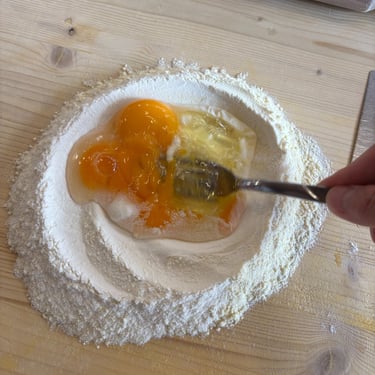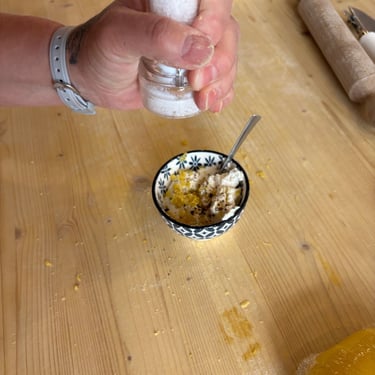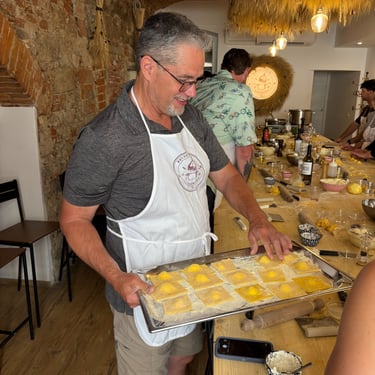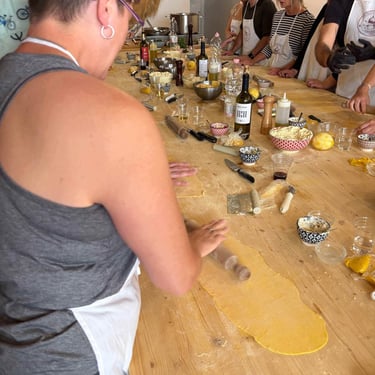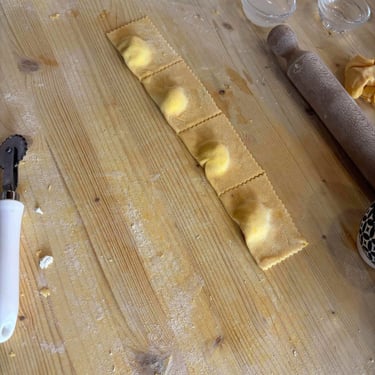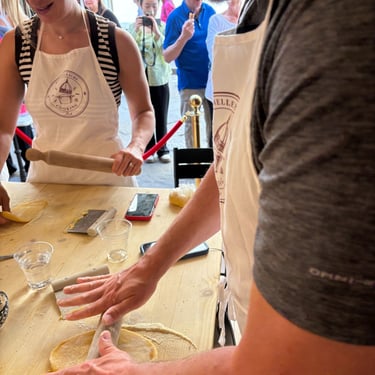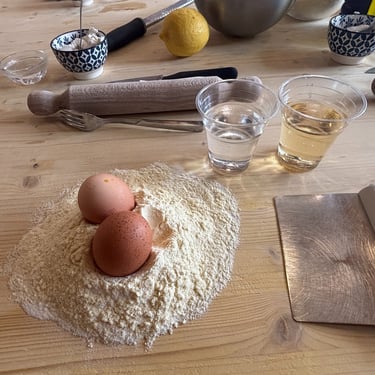Learn How to Cook in Italy
Experienced or not, cooking classes will make you laugh.
ITALY GALLERY
7/17/20253 min read
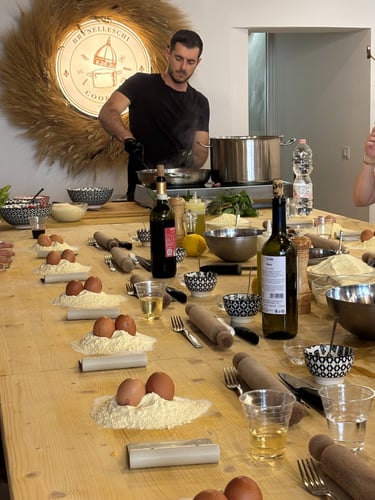

One of the most popular tourist activities to span all of Italy are live cooking classes. Perhaps it’s because we don’t have enough Nonna’s teaching us how to cook as we grow up. Or perhaps it's because we’ve all grown too busy to stop and make real food from raw ingredients. I LOVE to cook from scratch. Greg can barely make pancakes from a mix. As a way to bridge the gap of skills between us, we decided to take a class in a skill neither of us had trialed, pasta making from scratch. We were stunned when we found a 3-hour cooking class in Florence complete with all the wine we could drink for less than $100 total. We immediately signed up.
We arrived at the ground level shop where a large table was set with mounds of flour, eggs, wine, and other containers. The instructor introduced himself and described the ONE pasta dough we would make to use in three types of pasta dishes.
1 Ravioli with a butter and sage sauce
2 Tortelli with a Tuscan Ragu
3 Pappardelle with the arrabbiatta sauce
For the sake of time management, the instructor made the sauces with assistance from selected students. Those sauces bubbled to perfection as the students made all the noodles for each other to sample.
The instructor guided all the students, competent or struggling, through every step of the ONE dough before directing us to divide it into three equal chunks. We followed his detailed directions to fold, cut, or fill the dough as needed to make the Ravioli, Torelli, and Pappardelle. As we finished each pasta type, the instructor collected our samples, boiled them, added the correct sauce and served it back for us to trial. Since we all created our own filling in the ravioli, there were differences in each bite. More salt, less pepper, not enough parmesan, etc. Even Greg began to understand how his fear of over-seasoning when cooking at home could impact the final flavors of the meal resulting in dull food profiles.
If you ask an Italian, “Who’s Ragu is better?”, the answer will always be “My Nonna’s”. But the answer, we learned, also hinges upon the region your family comes from. For years there has been tempered competition between the Bologna Ragu and the Florence Ragu. Here are some differences between them.
One uses more vegetables or “sofrito” such as carrots, celery, and onion.
They use different ratios of meat (ex. 75% beef- 25% pork).
One uses red wine and the other uses water as the liquid to simmer for hours.
Though the students were neither Bolonese nor Florentine, the instructor challenged us to build our own flavors in the ricotta filling we had to mix. We had to use our own sense of taste to determine the amount of salt, pepper, lemon, and parmesan for our filling. When it came to the time to taste the ravioli made by students, it was quite clear that such subtle ingredients in the filling alone can completely alter the entire pasta dish. Whether you are an experienced cook or avoid the kitchen, we encourage you to experiment with food. Try a new recipe. Add a new ingredient to your family’s favorite dish. Do a blind taste test with a friend or date. Kitchens are the heart of the home in Italy. Make your home beat loudly too.
The basics: If you are still reading, then you might be interested in knowing some basics of our cooking lesson.
1. Raw Ingredients for pasta are ridiculously simple. Flour - do not use all purpose or bread flour. Most recipes call for a mix of 00 flour or semolina. Egg, Lemon, Salt, Pepper, Ricotta, Parmigiano-Reggiano Cheese.
2. The power of Salt. Salt is a miracle mineral with millions of uses. In cooking, it’s not only a seasoning, but it draws out the moisture in your meat, vegetable, or other ingredients. Adding salt too early in the dish might leave your meal dry. Many cooks add salt to the boiling water for a mild flavor, and then only add salt again at the end of the cooking for flavor.
3. Ricotta Cheese. The term Ricotta means re-cooked. It derives from the leftover whey that is separated from the cooked cow, goat, sheep, or water buffalo milk. It is then RE-cooked in the final production stage. Interestingly it can be flavored to the sweet or savory side, but always to be flavored. So add some cocoa powder to it and put it on toast, or flick some lemon zest into it to brighten your lasagna.
4. A culinary antioxidant, every Italian cook has a Basil plant. Used in all the sauces during our class, basil is surprisingly powerful in the flavor profile of a dish IF it is handled correctly. Although you can use a knife and cut microscopic membranes this method tends to leave the flavor on the cutting board. Instead, Italian chefs prefer to tear the basil leaves into the dish in order to retain the best flavor.
As the wine flowed, the laughter amongst strangers increased. People talked about food, travel, and home lives. Throughout the wonderful cooking lesson, the instructor infused culinary tips and cultural perspectives. He even told us about the Flavor War.
